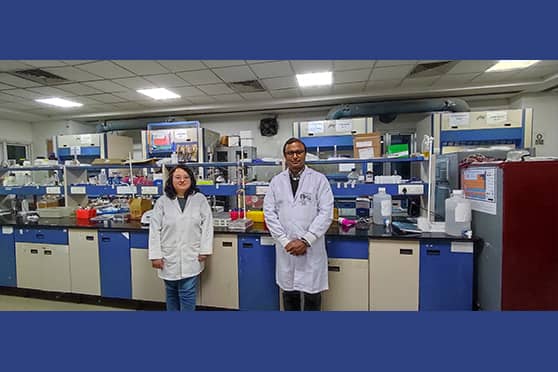IIT Mandi researchers use orange peel to produce biofuel precursors


Researchers at Indian Institute of Technology (IIT) Mandi have used hydrochar derived from orange peels as a catalyst to convert biomass-derived chemicals into biofuel precursors – a development that may help overcome the global concern over dwindling petroleum reserves.
The findings of the research team have been recently published in the Green Chemistry journal. The research was led by Venkata Krishnan, associate professor, School of Basic Sciences, IIT Mandi, and co-authored by his students Tripti Chhabra and Prachi Dwivedi.
Talking about the research, Krishnan, said, “One of the driving interests among the renewable energy community is the development of relatively clean and energy efficient processes to convert biomass into useful chemicals, including fuel.”
Biomass-derived products from naturally occurring materials are currently the fourth most significant energy source that can meet the energy demand after coal, oil, and natural gas in the country. Lignocellulosic biomass obtained from forestry and agricultural waste, for example, can potentially be converted to a variety of useful chemicals by various methods.
The researchers have used hydrochar derived from orange peels to catalyse the conversion of biomass-derived chemicals into biofuel precursors. The researchers heated dried orange peel powder with citric acid under pressure in a hydrothermal reactor (a lab-level “pressure cooker”) for many hours. The hydrochar that was produced was then treated with other chemicals to introduce acidic sulfonic, phosphate and nitrate functional groups to it.
“We used these three types of catalyst to bring about hydroxyalkylation alkylation (HAA) reactions between 2-methylfuran and furfural, compounds that are derived from lignocellulose, to produce fuel precursors,” said Tripti Chhabra.
The scientists found that the sulfonic functionalized hydrochar catalyst was able to catalyse this reaction effectively to produce biofuel precursors in good yield.
“We were able to synthesise the biofuel precursors under solventless and low temperature conditions, which decreases the overall cost of the process and also makes it environment friendly and attractive from an industry point of view,” said Krishnan.
The team also performed green metric calculations and temperature programmed desorption (TPD) studies to gain deeper insights into the catalytic activity of sulfonic, nitrate and phosphate functionalized hydrochar derived from orange peels.